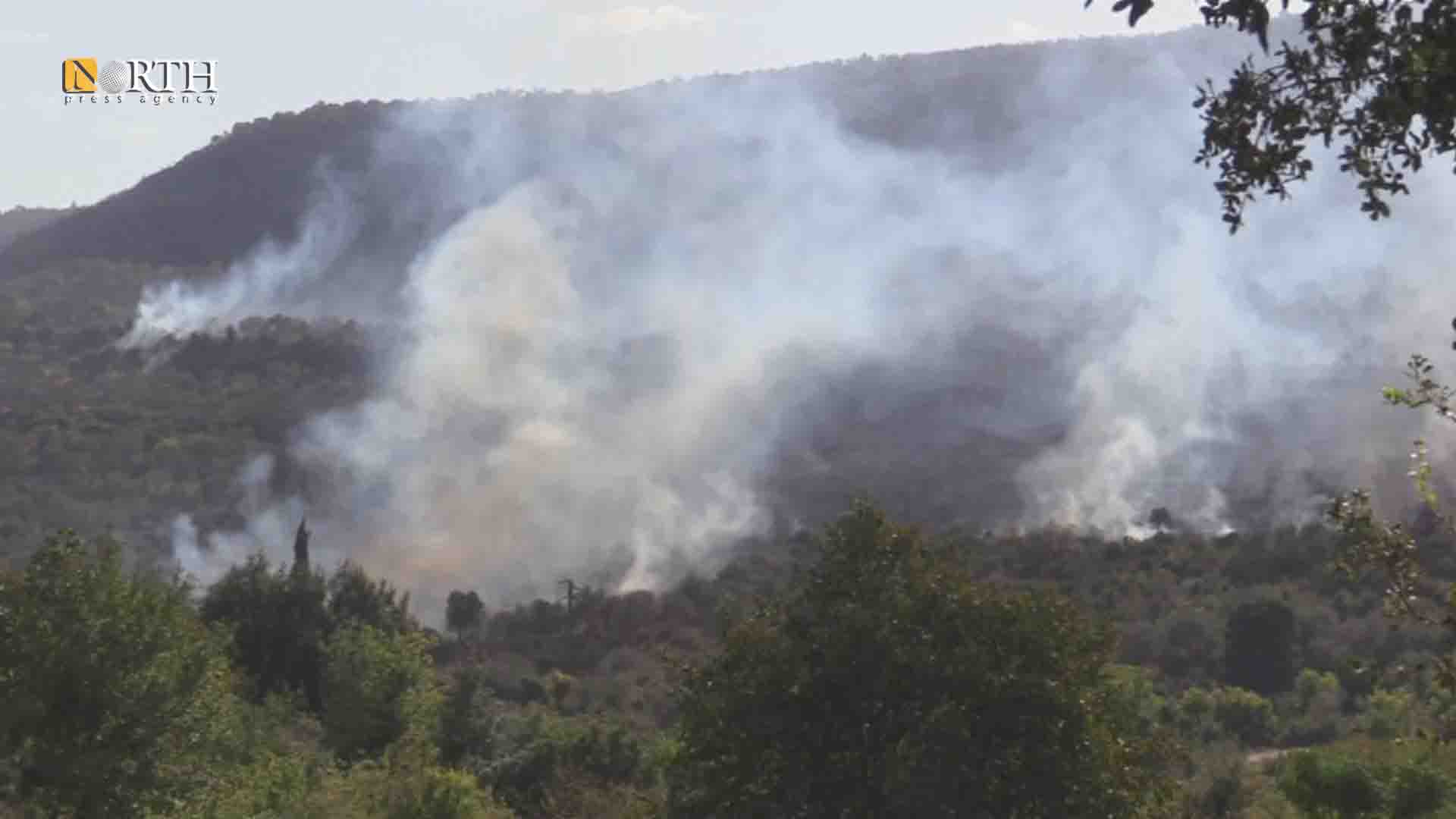Makhlouf demands telecom company Syriatel to donate to Syrian forest fire victims amid government promises of compensation
HOMS, Syria (North Press) – On Sunday, Syrian businessman Rami Makhlouf demanded that Syriatel, under threat of penalty, pay the amount that the company had previously announced that it would donate to those affected by the fires on the Syrian coast.
Makhlouf’s reminder came hours after the Syrian Trust for Development, which is directly linked to President Bashar Assad’s wife Asma, announced that it had collected six billion Syrian pounds for those affected by the fires.
Syriatel Council former head said that the grant amount, which is seven billion pounds, is not from the sums withheld, “because the seizure is placed on us personally and not on Syriatel or its partners.”
On the 13th of October, Makhlouf announced his donation of seven billion Syrian pounds, or $3.5 million, to residents of the areas affected by the recent fires in Syria.
Makhlouf said that there is no legal barrier to the company distributing its profits.
Next Sunday marks the end of the legal deadline, 15 days, to start implementing the contents of the communiqué that Rami Makhlouf sent to the management of the company placed under judicial custody.
The communiqué requires the distribution of profits and the election of a board of directors.
Makhlouf cannot donate Syriatel’s money with the force of law, according to human rights defenders who revealed that judicial receivership over the funds prevents the owner from disposing of them.
Makhlouf, a cousin of President Assad, said that Syriatel is not a property of the state, but the state receives 20% of its revenues, which is roughly equivalent to 50% of its profits, and it is a public shareholding company that offered part of its shares for initial public offering (IPO).
According to the IPO, the company is owned by more than 6,000 shareholders, in addition to the ownership of the RAMAK Development and Humanitarian Projects Company, which Makhlouf said, “with all its revenues, helps a large segment of the Syrian people.”
Government promises
Syrian President Bashar Assad and his wife visited recently the villages and areas of Homs and the coast, that witnessed widespread fires.
The visit was followed by promises from the Syrian government to discuss ways to compensate for the damages of the fires that resulted in great losses, including thousands of hectares of agricultural lands and forests.
Syria witnessed similar fires at the beginning of September, before the renewal and expansion of fires towards new lands early in October.
Syrian Minister of Agriculture Hassan Qatana spoke to official media about direct compensation to farmers, which includes trees that have completely died, and their replacement with other trees.
Regarding those promises, Kasir Rahal, a farmer from the village of Habanamra west of Homs, told North Press that they fear that the minister’s words will not be implemented.
He added that the affected farmers’ fears relate to the officials themselves, as “they are always making false promises.”
Qatana gave advice to farmers about the necessity of not cutting or pruning any tree for a month in order to discover the real damage caused to it.
The minister pointed out that the area of burned lands amounted to ten thousand hectares, most of which are lands planted with fruit trees, estimated at two million trees, most of which are olives and citrus fruits.
The Follow-up Committee on Fire Damages in Latakia told North Press that all houses damaged by the fires have been documented.
The committee added that rehabilitation will begin this week at the latest, in preparation for the return of the property to their owners.
Thousands affected
The restoration will be, according to the committee, carried out through specialized workshops affiliated with the Technical Services Directorate, or by the owners of these houses directly, which is currently being studied.
The Director of the Relief Office in Latakia Governorate indicated in a statement recently that the fire damage affected 27,000 families in Latakia.
Aid has been delivered to 7,000 families within the first aid phase, which, according to the relief office, will involve providing food and other aid, while the second phase will consist of the restoration of houses.
As for Homs, the damage affected about 400 families and 300 hectares of land in the western countryside of the governorate, on the administrative borders between Homs and Tartus, in the area near Ali, Habanamra, Jawikhat, Burj al-Maksour, and Jawamis Valley.
Homs governorate also had made a survey of residential and agricultural damages.
Nasser Halloum, an engineer in the Homs Agriculture Directorate, told North Press about the agricultural damage that included 137 hectares of land.
According to Halloum, 25,000 fruit trees, including 15,000 olive trees, 9,000 apple trees, 700 citrus trees, 100 peach trees, and 200 kiwi trees were damaged, in addition to an untold number of pomegranate trees.
Forest lands were also annexed to include 160 hectares of damaged areas, including eucalyptus, cypress, pine, oak, and laurel trees.
Hamid Ghazal, a lecturer at the Faculty of Agriculture at Ba’ath University in Homs, told North Press that compensation for trees will not give the required result quickly.
He pointed out that the burnt trees will need many years to return to their previous productivity, especially olives. As for the forests, they will need twice as much time.

